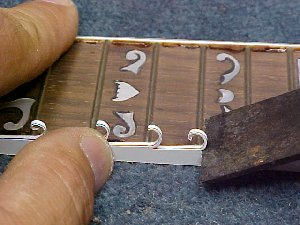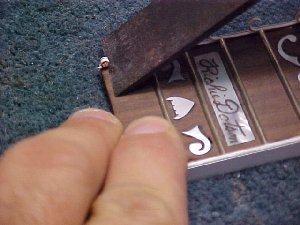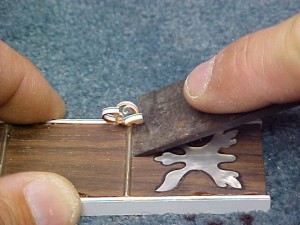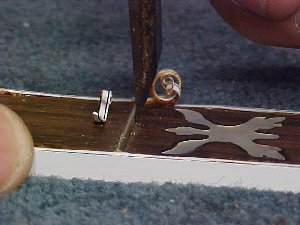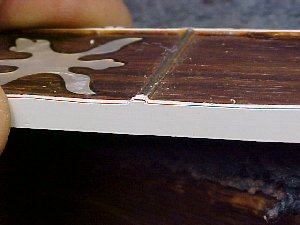|
|
|
I use a very sharp 1/2″ wood chisel bevel side down and take off only a tiny amount of binding at a time. About 1/32″ is plenty but the amount you can safely remove without damage will depend on the rigidity of the binding you are using, the temperature and how sharp your chisel is. The material should be taken off toward each fret and extra care should be taken on the ends.
|
|
|
|
|
|
After trimming each fret the binding starts to take a rough shape. This is quite tedious work and should be done in a well lit place. Do not be in a hurry when shaping the binding. It will show in the end if you do.
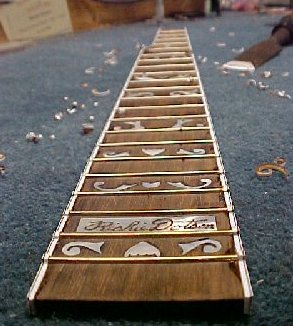 |
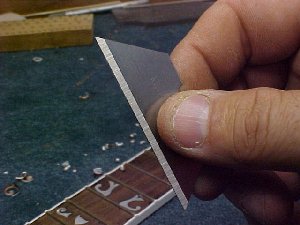 |
Once the whole fingerboard is roughed in grab a brand new razor blade such as this box cutter blade or a new safety razor blade.
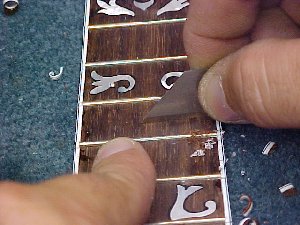 |
 |
You can see the blade is used flat against the binding and the fingerboard. You shouldn’t overdue it here for obvious reasons but the result you will get from this step is a bit more refined than the chisel as you can see.
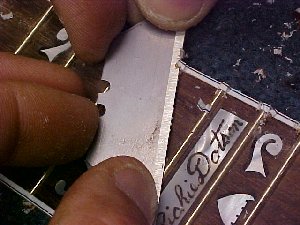 |
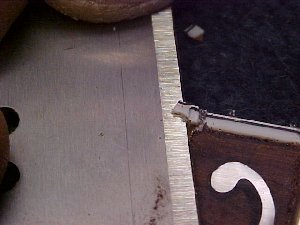 |
After the binding has been leveled with the fingerboard, the blade you are using can be laid across a couple of frets therefore leveling it in order to gently remove the material remaining above the plane of the frets.
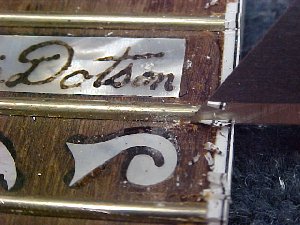 |
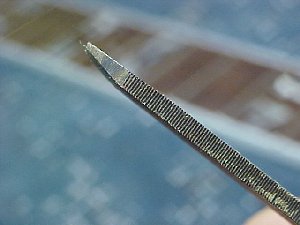 |
 |
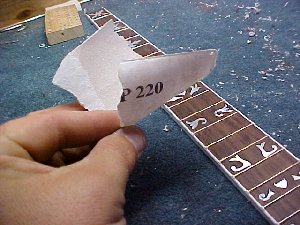 |
 |
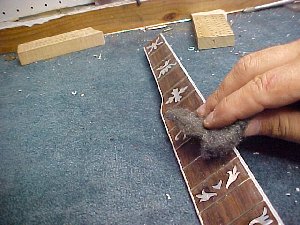 |
Using the 220 grit sandpaper, lightly sand over the edges of the binding then follow up with 0000 steel wool to finish off the job.
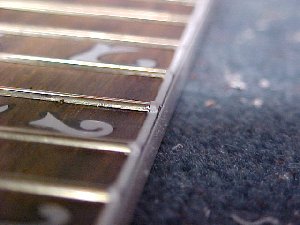
This is a close up of the finished product. This one turned out really well.
I hope you have enjoyed this series.
Richie Dotson 12-26-03

